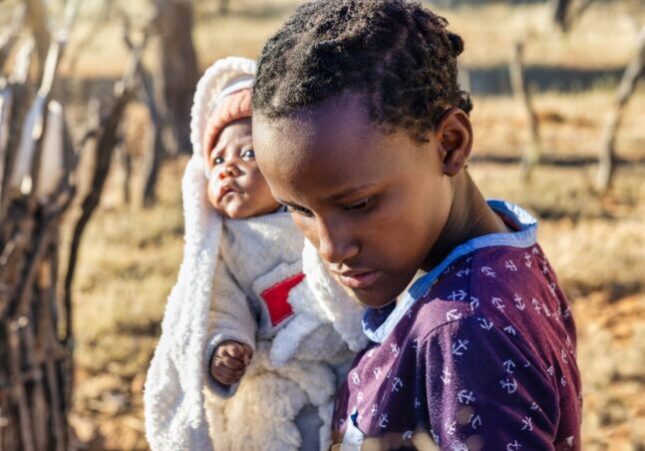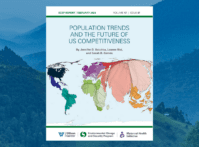-
Essential and Overdue: Quality Care for Adolescent Mothers and First-Time Parents
November 20, 2024 By Consolata Chikoti
Maternal health among adolescents in low- and middle-income countries (LMICs) remains a largely unexplored and frequently neglected area within the public health field. Adolescent birth rates remain disproportionately high in LMICs, accounting for approximately 97% of all adolescent births globally. The prevalence of child marriage, poverty, gender-based violence, and limited access to and utilization of contraceptive methods all contribute to this startling statistic.
Adolescents also face elevated maternal mortality risks compared to women in other age groups, primarily due to complications such as preeclampsia, postpartum endometritis, pre-term delivery, and infections. Complications arising from pregnancy and childbirth are the leading cause of death for girls aged between fifteen and nineteen worldwide.
Yet despite substantial indications of high maternal mortality rates among adolescents, one recent study suggests that there is a significant gap in robust evidence for effective interventions to address adolescent pregnancy, childbirth, and postnatal care in LMICs.
This new research also reveals that policy initiatives largely prioritize reducing adolescent pregnancy rates but place less emphasis on ensuring high-quality healthcare for pregnant adolescents, adolescent mothers, and first-time parents.
Child Marriage Drives Adolescent Pregnancies and Maternal Mortality
Child marriage is a key factor that contributes to the high number of adolescent pregnancies in LMICs. Today, there are approximately 650 million young women who were married before 18 years in those nations, with 50 percent of them residing in Eastern and Southern Africa. Research conducted between 2013 and 2022 in LMICs has consistently shown a strong connection between child marriage and teenage pregnancy. Women who marry before the age of 18 are eight times more likely to have three or more children compared to their counterparts who marry at 18 years or older.
Although unmarried youth also experience pregnancy, there is limited evidence to indicate whether married adolescents receive better support when accessing maternal health services compared to their unmarried counterparts. A study conducted in Uganda and published in 2022 found that both married and unmarried youth exhibited low utilization of health facilities during childbirth. However, further research is needed to explore this trend beyond Uganda.
Given the significant impact of adolescent pregnancies on maternal health outcomes, many policies and interventions prioritize ending child marriage and addressing other contributing factors to teenage pregnancy. This targeted approach has contributed to a global decline in adolescent birth rates, from 65 births per 1,000 women in 1990 to 47 births per 1,000 women in 2015.
One key intervention came when UNICEF and UNFPA launched a Global Program aimed at accelerating efforts to end child marriage in 2016, taking 12 countries where the practice is most widespread as its primary focus. By the close of 2022, this initiative had reached more than 21 million adolescent girls and engaged upwards of 50 million community members. More than 500 million partnerships have been established, and some 40,000 facilities created.
Furthermore, eight national strategies and 169 sub-national action plans also have been financed in connection with the initiative, resulting in the adoption of 156 legal instruments aimed at ending child marriage. Numerous projects spurred by this effort also have contributed valuable data and evidence, advancing knowledge on effective interventions to eradicate the practice.
These interventions, and particularly legal reforms, aim to create sustainable, long-term impacts by raising the minimum legal marriage age — a measure that can significantly reduce child marriage and adolescent pregnancy rates across many nations. However, in numerous countries, legal reform efforts encounter substantial obstacles, including both entrenched customary laws grounded in patriarchal gender norms and a general lack of political will and resources. Addressing these challenges necessitates sustained investment and advocacy over many years. According to UN Women, at the current rate of progress, child marriage will not be eradicated until 2092.
Gaps in Maternal Health Care for Adolescent Women
While long-term interventions are crucial, they inadvertently shift attention away from broader, dedicated efforts that directly address adolescent maternal health. Consequently, the emphasis on prevention may overlook the unique healthcare needs of adolescents who experience pregnancy, thus limiting the overall efficacy of maternal health programs.
The WHO’s standards for adolescent-friendly health services largely overlook pregnancy care, and guidelines for adolescent maternity care rely predominately on expert opinion, and not on evidence. Pregnant adolescents often fall between the cracks of maternal health and adolescent programs, with each resource assuming that the other will address their needs. While there is a growing focus on age-appropriate care, a clear framework is still missing. This gap makes it hard to identify and improve care for pregnant adolescents with complex needs.
A recent review of the high-quality health system framework for pregnant adolescents in LMICs highlights major evidence gaps in effective interventions. The study identified a lack of research on adolescent-friendly maternity training, privacy measures, or critical outcomes like maternal mortality, violence prevention, and substance misuse. Additionally, the largely documented outcomes for adolescent and their newborns are aimed at preventive measures.
The lack of evidence on adolescent pregnancy interventions in LMICs is largely due to cultural norms, stigma, and limited healthcare access. Many adolescents give birth at home, often due to traditional beliefs and customs, limited education on antenatal care, and poor access to health facilities, especially in rural areas. Many adolescent girls skip antenatal visits, leading to untracked pregnancies and increased health risks.
Weak health information systems and gender inequality further hinder data collection on adolescent pregnancies. Insufficient resources for tracking data in LMICs result in gaps in information on adolescent pregnancies, complicating efforts to develop effective interventions.
Seeking Solutions
The prevalence of adolescent pregnancy in LMICs necessitates a multidimensional approach. Investments in reducing pregnancy rates must operate in tandem with broader efforts to enhance quality care for adolescent mothers. It is essential to recognize adolescents as a distinct group with unique healthcare needs within the framework of the WHO’s guidelines for adolescent-friendly health services.
A critical component of this framework is the emphasis on high-quality, adolescent-specific maternal health services that cater not only to medical needs but also to social and psychological aspects that influence health-seeking behaviors. Adolescents often face barriers such as stigma, lack of autonomy, and limited knowledge about available healthcare options, which impede their access to and use of health services
Moreover, fostering a supportive policy environment and community engagement can strengthen adolescents’ confidence and motivation to seek healthcare services. Holistic frameworks that integrate education, community support, and accessible, high-quality care are essential to supporting adolescent-friendly health services.
Sources: BMC International Health and Human Rights; BMC Pregnancy and Childbirth; BMC Public Health; BMJ; BMJ Global Health; The Guttmacher Institute; The Lancet; Medical Journal of the Islamic Republic of Iran; PLOS One; UN; UNICEF; World Health Organization.
Photo Credit: African teenager and baby. Lucian Coman/Shutterstock.com.
 A Publication of the Stimson Center.
A Publication of the Stimson Center.






